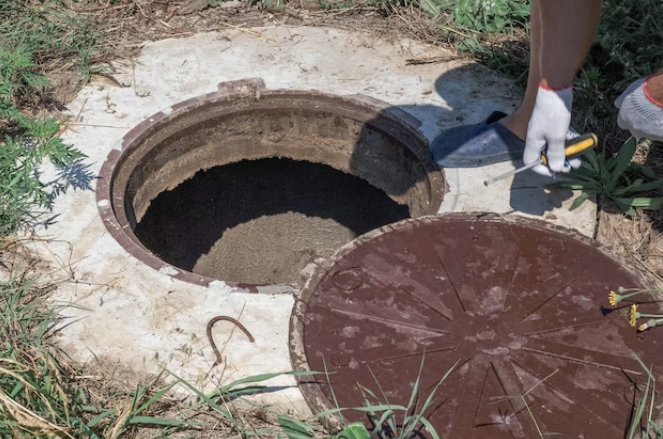Water wells are essential sources of clean, reliable water for countless communities and industries across the globe. However, over time, these wells can experience reduced efficiency and diminished performance due to various factors such as mineral buildup, biofouling, and mechanical wear. At Austin Drilling & Well Repair, we understand the importance of maintaining and optimizing your water well investment. Our water well rehabilitation techniques are designed to restore efficiency and extend the life of your well, ensuring a consistent and sustainable water supply for years to come.
Understanding the Need for Rehabilitation
Before delving into the techniques we employ, it’s crucial to understand why water well rehabilitation is necessary. Over time, wells can encounter a range of issues that affect their performance:
- Mineral Buildup: Minerals present in groundwater can gradually accumulate on well components, reducing flow rates and decreasing water quality.
- Biofouling: Bacteria, algae, and other microorganisms can thrive in well systems, leading to biofouling, which restricts water flow and can introduce contaminants.
- Mechanical Wear: Components such as pumps, screens, and casings can wear down or become damaged over time, causing decreased efficiency and potential well failure.
- Sediment Accumulation: Sediments like sand and silt can enter the well and settle, causing blockages and impairing water flow.
These issues can result in decreased water yield, increased energy consumption, and, ultimately, the need for costly well replacement if left unaddressed. Our water well rehabilitation techniques are aimed at tackling these problems head-on.

Our Water Well Rehabilitation Techniques
- Mechanical Cleaning: One of the most common issues in water wells is mineral buildup. Our team employs specialized tools and techniques to remove scale, rust, and mineral deposits from the well’s components. This process not only restores flow rates but also improves the overall quality of the water.
- Chemical Treatment: In cases of severe biofouling or microbial contamination, we may recommend chemical treatments. These treatments effectively disinfect the well, eliminating harmful bacteria and preventing future growth.
- Screen and Casing Repairs: Damaged screens and casings can significantly affect a well’s efficiency. Our experts can identify and repair any structural issues, ensuring the well operates at peak performance.
- Well Development: Over time, sediment can accumulate in the well, reducing water yield. Well development techniques involve high-pressure surging or airlifting to remove these sediments and restore the well’s productivity.
- Pump Rehabilitation: If the pump is showing signs of wear or decreased performance, we can rehabilitate or replace it. A well-maintained pump is essential for efficient water extraction.
- Water Quality Testing: To ensure the water meets regulatory standards, we conduct comprehensive water quality testing. This helps identify any contamination issues and guides appropriate treatment measures.
Benefits of Water Well Rehabilitation
Investing in water well rehabilitation offers numerous benefits for both residential and commercial well owners:
- Cost Savings: Proper rehabilitation can extend the life of your well, saving you the expense of drilling a new one.
- Improved Water Quality: Removal of contaminants and mineral buildup leads to cleaner, safer water.
- Increased Efficiency: Well rehabilitation restores flow rates and overall efficiency, reducing energy consumption and operational costs.
- Sustainability: A rehabilitated well can continue to provide a sustainable water supply for years, reducing the strain on local water resources.
- Regulatory Compliance: Meeting water quality standards is essential for complying with environmental regulations.
Our Commitment to Excellence
At Austin Drilling & Well Repair, we take pride in our commitment to excellence in water well rehabilitation. Our experienced team utilizes state-of-the-art equipment and proven techniques to restore your well’s efficiency and extend its lifespan. We understand that a reliable water supply is essential for your daily life, agricultural needs, or industrial operations. That’s why we strive to deliver the highest quality service, ensuring that your well continues to provide clean, abundant water.
Enhancing Well Performance: Techniques for Well Rehabilitation and Development
Water wells play a critical role in providing clean and reliable water for various applications, from residential use to agricultural and industrial needs. Over time, these wells can face challenges that reduce their efficiency and output. At Austin Drilling & Well Repair, we employ a range of techniques to rehabilitate and develop water wells, ensuring they continue to serve their purpose effectively. Let’s explore the answers to some essential questions about these techniques.
What are the techniques used in well rehabilitation?
- Mechanical Cleaning: We use specialized tools and equipment to remove mineral deposits, scale, rust, and other obstructions from well components. This process helps restore flow rates and water quality.
- Chemical Treatment: In cases of biofouling or microbial contamination, chemical treatments are employed to disinfect the well, eliminating harmful bacteria and preventing further growth.
- Screen and Casing Repairs: Damaged well screens and casings can significantly impact a well’s performance. We identify and repair any structural issues to ensure optimal functioning.
- Well Development: Sediment accumulation in the well can reduce water yield. Well development techniques, such as high-pressure surging or airlifting, remove these sediments and enhance the well’s productivity.
- Pump Rehabilitation: If the pump shows signs of wear or reduced performance, we rehabilitate or replace it. A well-maintained pump is crucial for efficient water extraction.
- Water Quality Testing: Comprehensive water quality testing is conducted to identify any contamination issues and guide appropriate treatment measures.
Why do we need to rehabilitate existing wells?
- Preserving Investments: Well rehabilitation helps extend the life of your existing well, saving you the substantial expense of drilling a new one.
- Improved Water Quality: Removal of contaminants and mineral buildup ensures that the water from your well is clean and safe for consumption and other uses.
- Enhanced Efficiency: Rehabilitation restores the well’s flow rates and overall efficiency, reducing energy consumption and operational costs.
- Sustainability: A rehabilitated well can continue to provide a sustainable water supply for years, reducing the strain on local water resources.
- Regulatory Compliance: Meeting water quality standards is essential for complying with environmental regulations, ensuring you avoid legal issues and fines.
How do you rejuvenate a water well?
Rejuvenating a water well involves a combination of techniques to restore its efficiency and output:
- Assessment: We begin by assessing the well’s current condition, identifying any issues affecting its performance.
- Cleaning and Disinfection: Mechanical cleaning and, if necessary, chemical treatments are used to remove deposits, biofouling, and contaminants.
- Structural Repairs: Any damaged screens, casings, or other components are repaired or replaced.
- Well Development: Sediment removal techniques are employed to improve water yield.
- Pump Evaluation: The pump’s condition is evaluated, and rehabilitation or replacement is carried out if needed.
- Water Quality Testing: Comprehensive water quality testing is conducted to ensure the water meets regulatory standards and is safe for use.
What are the methods of well development?
Well development focuses on improving the flow of water from the well by removing sediment and other obstructions. Common methods include:
- Surging: High-pressure surging involves injecting water into the well at high speeds to dislodge and flush out sediments.
- Airlifting: This technique uses compressed air to create a strong upward flow in the well, carrying sediments to the surface.
- Chemical Treatments: Chemical agents can be added to the well to dissolve mineral deposits and facilitate their removal.
- Hydraulic Jetting: High-pressure jets of water are directed into the well to agitate and dislodge sediment, which is then pumped out.
In conclusion, well rehabilitation and development are essential processes to ensure the long-term efficiency and reliability of water wells. These techniques, ranging from mechanical cleaning to chemical treatments and pump rehabilitation, help address common issues and maintain water quality. Rejuvenating a water well involves a systematic approach, including assessment, cleaning, structural repairs, well development, pump evaluation, and water quality testing. Employing the right methods for well development, such as surging, airlifting, chemical treatments, and hydraulic jetting, can significantly enhance water yield and overall performance. Austin Drilling & Well Repair is dedicated to providing expert solutions in well rehabilitation and development to ensure access to clean and dependable water for our clients.
Contact us now!
Water well rehabilitation is a vital investment in maintaining a consistent and sustainable water supply. Whether you’re a homeowner, farmer, or industrial facility manager, Austin Drilling & Well Repair is here to support your well rehabilitation needs. Our techniques are designed to address common well issues, from mineral buildup to biofouling, ensuring that your well operates at peak efficiency and serves you for years to come. Don’t wait until your well’s performance declines—contact us today to schedule a consultation and discover how our expertise can benefit your water well system.


